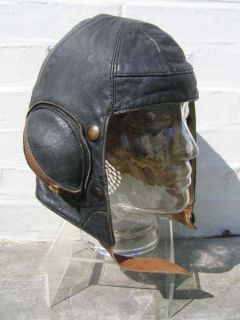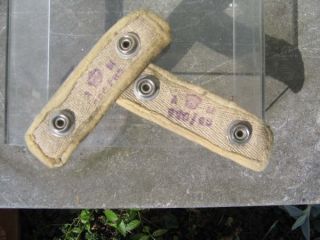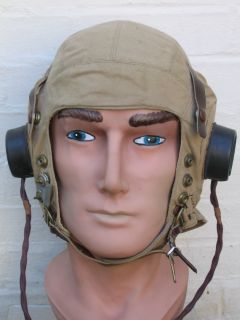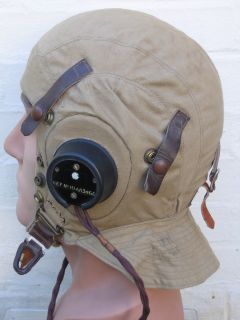|
|
RAF flying helmets
The RAF and other British Commonwealth Nations used basicly the same helmet types. The early flight helmets were introduced in the 30's and still in use in 1941. These helmets used big round earphone housings while the later versions used the smaller ear cups. Some flying helmets were theatre made variants made by local craftmen.
Most RAF helmets were made of leather but summer flying helmets started to appear in mesh cloth. Except for the material used, it was the same helmet model.
It should be noted that RAF issue and FAA issue helmets were used by both Air Forces and also by other allied airmen. FAA helmets are easily identified by their 2 big round ear cups which housed the Gosport tubes and receivers.
Early externally wired flying helmets
  
Left: RNZAF zippered flying helmet patterned after the RAF B Type helmet. The 2 press studs are for attaching a D Type oxygen mask or a microphone carrier.
Middle: AM issue chamois lined face protectors for protecting the face from cold burns when a mask was not worn.
Right: Inside view of RNZAF zippered helmet with 1 protector in place.
  
Left: RAF first pattern D Type flying helmet, the press studs can take either a D Type oxygen mask inside or a external rubber mask.
Middle: Back view of the D Type helmet, note the neck flap to protect the wearer from the desert sun.
Right: Side view, early flying helmets had usually 4 goggle straps.
Later interior wired flying helmets
 
Left: FAA second pattern flying helmet in white leather. Note the Gosport tubes in combination with receivers.
Right: Back view of a RAF second pattern C Type helmet. This hemlet was used by an American P-51 pilot and it is rigged with US receivers instead of the AM receivers.
|